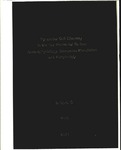Pyramidal Cell Diversity in the Rat Prefrontal Cortex: Electrophysiology, Dopamine Modulation and Morphology
| dc.contributor.supervisor | Wennekers, Thomas | |
| dc.contributor.author | Bartsch, Ullrich | |
| dc.contributor.other | Faculty of Science and Engineering | en_US |
| dc.date.accessioned | 2011-08-26T08:38:06Z | |
| dc.date.available | 2011-08-26T08:38:06Z | |
| dc.date.issued | 2011 | |
| dc.date.issued | 2011 | |
| dc.identifier | 390434 | en_US |
| dc.identifier.uri | http://hdl.handle.net/10026.1/555 | |
| dc.description.abstract |
The prefrontal cortex (PFC) is critically involved in many higher cognitive functions such as goaldirected behaviour, affective behaviour and especially working memory. In vivo extracellular recordings of PFC neural activity during working memory tasks show high variety in observed spiking patterns. These complex dynamics are critically shaped by intrinsic, synaptic and structural parameters of respective prefrontal networks. Moreover, dopamine (DA) is crucial for correct functioning of the PFC during working memory tasks. DA modulates a number of synaptic and intrinsic biophysical properties of single neurons, in particular deep layer pyramidal cells, which represent the major output neurons of the PFC. Despite a high variability of cortical pyramidal cell firing patterns, and somatodendritic morphology, no study has yet systematically examined correlations between intrinsic properties, morphological features and dopaminergic modulation of intrinsic properties. This study investigated properties of deep layer pyramidal cells through whole cell patch clamp in acute brain slices of the adult rat PFC. Cells were characterised physiologically through a variety of stimulation protocols surveying different time scales and wide intensity ranges, while all fast synaptic transmission was blocked. Furthermore the same catalogue of stimuli was recorded whilst applying specific DA receptor agonists to elucidate effects of DA receptor activation on intrinsic properties. All recorded cells were injected with biocytin and dendritic morphology was reconstructed from confocal image stacks of fluorescently labelled neurons. From the resulting data a set of characteristic variables were defined and a combination of principal components analysis and hierarchical cluster analysis was used to identify similarity between recorded cells in different parameter spaces spanned by intrinsic properties, intrinsic properties under dopaminergic modulation and morphology, respectively. The analysis presents evidence for distinct subpopulations within prefrontal deep layer pyramidal cells, as seen by clustering of recorded cells in these high dimensional parameter spaces. These subpopulations also show distinct input-output relationships, bearing implications for computational functions of these subpopulations. Furthermore, this study presents for the first time evidence of subpopulation specific DA effects in deep layer pyramidal cells. The quantitative analysis of somatodendritic morphology confirms physiological subpopulations and identifies characteristic morphological features of deep layer pyramidal cells. Moreover, cluster observed in different parameter spaces overlap, leading to a definition of subpopulations that concurs with previously described prefrontal pyramidal cell types. In conclusion, the results presented provide some deeper insight into fundamental principles of information processing in prefrontal pyramidal cells under the influence of dopamine. | en_US |
| dc.language.iso | en | en_US |
| dc.publisher | University of Plymouth | en_US |
| dc.subject | Prefrontal Cortex | |
| dc.subject | Pyramidal cell type | |
| dc.subject | Neural Activity | |
| dc.subject | Cognitive Function | |
| dc.subject | Dopamine | en_US |
| dc.title | Pyramidal Cell Diversity in the Rat Prefrontal Cortex: Electrophysiology, Dopamine Modulation and Morphology | en_US |
| dc.type | Thesis | |
| dc.identifier.doi | http://dx.doi.org/10.24382/4291 |
Files in this item
This item appears in the following Collection(s)
-
01 Research Theses Main Collection
Research Theses Main


